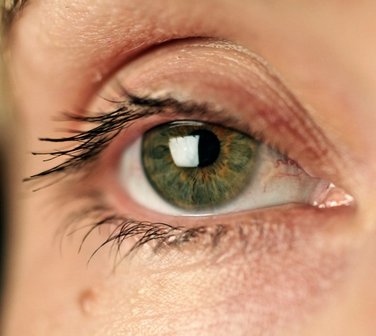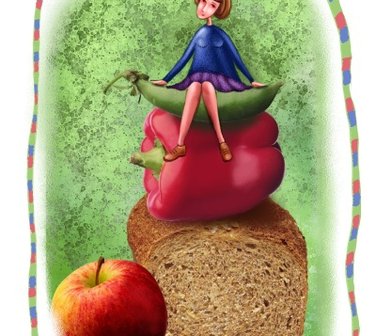Get a good night's sleep
HOW MUCH IS ENOUGH?
Sleep patterns are different for everyone and sleep requirements vary with age.
Newborn babies sleep between 15-20 hours each day and as we grow and develop, our sleep needs change.
According to Adelaide Withers, a respiratory and sleep consultant at Princess Margaret Hospital, primary- school-aged students require 10-11 hours of quality sleep each night. Although teenagers need less sleep, they still require 9-10 hours. Quality sleep should be uninterrupted and is just as important as food, water and oxygen.
“Good sleep is incredibly important, ” Dr Withers said. “Sleep provides time for the body to rest and restore itself. Not enough sleep or poor-quality sleep often results in a cycle of even less sleep which can then lead to fatigue, poor concentration and memory, and a variety of medical conditions, including heart disease, obesity, depression and anxiety.”
Your internal body clock also may play a role in your sleep patterns.
“There are some people I would call ‘night owls’ and some ‘morning larks’.
“Whether you are genetically predisposed to being more awake at night or in the morning (your chronotype) is something that can be very difficult to change.”
During puberty, the body undergoes a physiological change which affects the body clock, making it harder to fall asleep.
“Studies in the US have recently shown that starting school later (in the morning) for older children results in better attention by students who are often not getting enough sleep because they are forced to wake up earlier for the start of the school day, ” Dr Withers said.
NIGHT VISION
Dreams are images and ideas that occur in your mind when you are asleep. Dreams can be mundane and easily forgotten or sometimes so strange that you think about them all day. Scientists are not exactly sure of the reason for dreams although some studies have suggested that dreaming encourages growth and development; babies in particular dream a significant amount. Dreaming occurs during REM sleep when brain activity is high. The average person is believed to have three to five dreams each night although whether you remember your dreams depends on when they occurred during sleep and whether you woke up during them.
There are many different opinions as to what dreams may mean. In some early cultures, dreams were believed to be messages from the gods or a sign of the future. Dreams vary in content and nightmares are unpleasant dreams that often wake the dreamer in a state of anxiety or distress.
Did you know?
Having a new baby can result in between 500-750 hours less sleep for parents in the first year.
People can take catnaps with their eyes open, often without even being aware of it.
If it takes less than five minutes for you to fall asleep at night, you could be sleep-deprived.
The Guinness World Record for the longest period without sleep is more than 18 days during a rocking-chair marathon.
Body temperature and the brain’s sleep/wake signal are closely related. To drop off to sleep, the body needs to cool down, which explains why it is sometimes tricky to fall asleep on a hot summer’s night.
Before the electric light globe was invented, adults slept in line with sunrise and sunset, resulting in more sleep generally than in modern times.
Further information:
Australasian Sleep Foundation: sleep.org.au.
Sleep Health Foundation: sleephealthfoundation.org.au.
DREAM COMMON MEANING
Falling. Usually the dreamer is feeling insecure or overwhelmed in their waking life.
Being inappropriately dressed in public or dreaming that you have no clothes on. The dreamer feels exposed, awkward or vulnerable.
Teeth. Dreaming about teeth can show a fear of being unattractive or a fear of embarrassment or loss of power in real life.
Being chased. This is reputed to be one of the most common nightmare themes and can mean that the dreamer feels threatened by something in real life.
Being lost or trapped. This dream usually means the dreamer is feeling trapped in real life and unable to make the right choice.
SACK-TIME TIPS
Sleep hygiene is a term used to describe the habits that help you have a good night’s sleep. Unhealthy habits, often developed over many years, can cause common sleeping problems, such as insomnia.
“Consistency is the key, ” Adelaide Withers said. “A bedtime and waking time that are the same every day and a relaxing night-time routine are critical for good sleep.”
Insomnia refers to difficulty falling asleep or staying asleep. It is a common condition, with more than one-third of people experiencing it at some time. Short-term insomnia is usually caused by factors such as jet lag, illness, stress and changes in sleeping environment. If people suffer from insomnia for a month or more, this is called persistent or chronic insomnia and can need medical help. It can be caused by changes to the body’s internal clock and some medical conditions and sleep disorders, such as restless leg syndrome, snoring and sleep apnoea, although sometimes there is no known cause. Not being able to sleep often causes anxiety in people which then causes them to suffer from insomnia more. According to Dr Withers, poor sleep hygiene can result in insomnia for some people.
Parasomnias are a category of sleep disorders that can interfere with the sleep process — they range from sleepwalking and sleep talking through to teeth grinding and night terrors. Some of the conditions are more common in childhood and decrease with age.
Dr Withers’ sleep-hygiene tips:
• Have a regular bed routine (go to bed at roughly the same time each night and get up at the same time each morning).
• Use your bed only for sleeping (not reading, doing homework or playing).
• Get enough exercise (but not too close to bedtime).
• Do something relaxing just before bed, such as having a shower or reading somewhere other than in bed.
• Don’t use electronic devices such as phones and tablets in bed or just before sleep. They emit a blue light which stimulates the brain and can prevent sleep. Even ereaders (such as a Kindle) can cause sleeplessness.
• Don’t go straight from watching TV to bed. TV stimulates the brain and can cause sleeplessness.
SNOOZE SETTINGS
There are two main stages of sleep which our brain moves through repeatedly every night: rapid eye movement (REM) and non-rapid eye movement (NREM) sleep.
REM sleep occurs regularly throughout a night of sleep and is sometimes referred to as active sleep. During this stage of sleep your brain is very active and your eyes tend to dart about under your closed eyelids. In babies, this sleep stage makes up more of the total sleep for the night. As you get older, REM sleep reduces until by age 13 it accounts for about 20 per cent of your nightly sleep.
“REM sleep is when we do most of our dreaming, ” Adelaide Withers from Princess Margaret Hospital said. “During this stage of sleep your body is paralysed, your heart rate increases, your breathing is irregular and your blood pressure rises.”
NREM sleep makes up the rest of the time you are sleeping. The amount and type of NREM sleep also varies with age. This type of sleep moves through several stages which range from dozing and drowsiness where you hover between being asleep and awake through to deep sleep when your muscles relax and your blood pressure, heart rate and breathing become very slow. It is during the final stage of NREM sleep when your body is able to restore itself (and grow if you are still a child).
© The West Australian









